ARMAGEDDON - Super Volcanoes, Meteorites and Earthquakes
This week a rabies-based Trojan Horse that smuggles drugs across the blood-brain barrier, why first-borns are brighter, progress with Parkinson's and a lunar telescope more powerful than Hubble. Plus in this week's ARMAGEDDON-focused show we look at supervolcanes, earthquakes and arsenic, find out why curtains are absolutely lethal and why a meteorite impact probably didn't dispense with the dinosaurs after all. Also, in Kitchen Science, we test the claim that tapping the top of a fizzy drink before you open it stops it spraying all over you...
In this episode
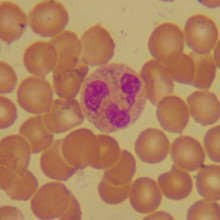
Backing up your Immune System - On Ice
A UK-based company, LifeForce, are offering an "immune system backup" facility whereby they store white blood cells collected when an individual is healthy so that they can be reinfused to restore the immune system later in life following a disease, such as cancer, treatment for which may require immune-destroying chemotherapy. 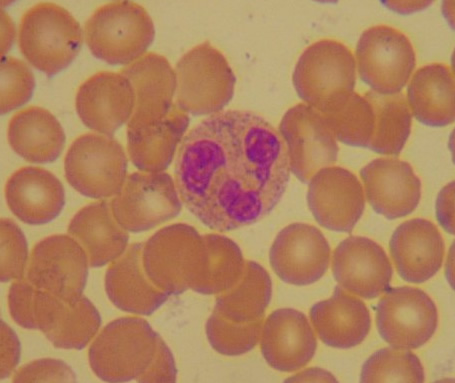
Starting with just a small sample of blood, the cells can be numerically expanded in the lab using growth factors that stimulate the production of whole legions of new cells. Using this technique it might also be possible to restore an immunity to a patient who's immune system has been dismantled by HIV. According to LifeForce co-founder Del Delaronde "the small blood sample [we collect initially] will have the complete repertoire of all your white blood cells". So when a patient's immune system fails, even years later, it can be reset using the stored material. "We send them their pristine system from 25 years ago."
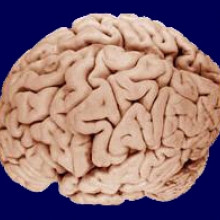
Parkinson’s progress
A study in the latest edition of the Lancet suggests that a new gene therapy might be a safe and effective way to stave off the symptoms of Parkinson's disease. A dozen patients with advanced Parkinson's have been treated over three years in the small-scale trial, led by Andrew Feigin of the Feinstein Institute for Medical Research in New York. 
The treatment involves an injection of a virus that has been modified to carry the gene for a protein called GAD, which stands for glutamic acid decarboxylase. This protein is vital for producing a neurotransmitter molecule in the brain called GABA, which is faulty in Parkinson's disease. Adding extra GAD helps to boost the levels of GABA, which helps to damp down the hyperactivity in the brain that causes the symptoms of the illness. After treatment, patients had a nearly 30% improvement in symptoms, as detected by brain scans.
Although the treatment can't help to change the underlying disease, it could help to stave off the symptoms of Parkinson's disease, which include tremors, and stiffness. The researchers are now planning much larger placebo-controlled clinical trial, to see how effective their new treatment is.

05:41 - Rabies Trojan Horse Smuggles Drugs into Brain
Rabies Trojan Horse Smuggles Drugs into Brain
Harvard Scientists have tamed one of nature's nastiest pathogens by turning part of the rabies virus into a powerful therapeutic tool.
Manju Swamy and his team borrowed the surface coat of the virus to produce the molecular equivalent of a Trojan Horse capable of smuggling drugs and other molecules past the "blood brain barrier" and into the nervous system.
The RVG peptide as it's known latches onto a chemical docking station called the acetyl choline receptor, which sits on the surface of nerve cells and blood vessel cells that form the blood brain barrier.
When it locks on the protein is taken up into the cells, carrying its cargo with it, which can include small interfering RNAs (siRNAs) that can shut off host genes in nerve cells, or even the genes of infecting viruses like Japanese Encephalitis.
Using this approach the researchers were able to rescue mice from a potentially fatal brain infection.
The team think that their approach might hold the key to highly efficient drug delivery to the nervous system and manipulation of brain neurochemistry in future.

It’s true – big sisters are smarter…
Here's some news that confirms what our Dr Kat has suspected for some time - the oldest child in a family is likely to have a higher IQ than his or her siblings. A Norwegian team found that first born children, or those who had lost their elder siblings and therefore become the oldest, scored higher on intelligence than their pesky younger brothers and sisters. The team studied more than 250,000 men in Norway, and although the difference in IQ between siblings was small, it works out as being statistically significant. 
What's really interesting is that it's not the absolute order of birth, but your position in the family that's important. Some researchers have suggested that differences between siblings are due to different levels of hormones or antibodies in the womb with successive pregnancies.
But this new study shows that it's more likely to be social factors - such as the amount of time parents lavish on their kids - that are more important. Scientists also suggest that the oldest brother or sister in a family might boost their IQ by helping out their younger siblings.
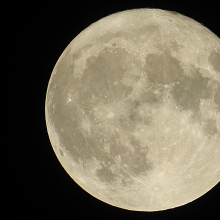
Mirror Mirror on the Moon
Space scientists have come up with a way to make a moon-based telescope 1000 times more powerful than Hubble. But unlike traditional telescopes their's uses a liquid as its mirror.  The idea relies on gravity deforming the liquid, when it is spun, into the perfect mirror shape. But the key breakthough from Roger Angel and his colleagues at the University of Arizona has been to find an ionic liquid that remains mobile and won't evaporate at ambient temperature and pressure in space, and also the ability to coat the surface of the liquid with silver particles to make it reflective. To obtain the best results the telescope would have to be sited on one of the moon's poles, because the low temperatures there will enable the mirror to detect objects with significant red-shift. Such a powerful telescope would enable us to see futher into space, and hence further back in time, than ever before.
The idea relies on gravity deforming the liquid, when it is spun, into the perfect mirror shape. But the key breakthough from Roger Angel and his colleagues at the University of Arizona has been to find an ionic liquid that remains mobile and won't evaporate at ambient temperature and pressure in space, and also the ability to coat the surface of the liquid with silver particles to make it reflective. To obtain the best results the telescope would have to be sited on one of the moon's poles, because the low temperatures there will enable the mirror to detect objects with significant red-shift. Such a powerful telescope would enable us to see futher into space, and hence further back in time, than ever before.
Could nylon create sparks?
It's true that nylon football shirts will cause a spark, as will nylon underwear! The theory with mobile phones is that they emitt microwaves, which can interact with metal to induce a current and then possibly create a spark. We're not sure this has ever been demonstrated with mobile phones, but we've all seen sparks from nylon clothes.
As to the likelyhood of a phone causing a fire compared to a nylon shirt causing a fire, we dont know!
So maybe we should ban nylon clothes at petrol stations!
Why shouldn't you drink before a CAT scan?
Contrast is a substance you inject (or administer) into people, which is usually something like Barium or Iodine (hopefully you wouldn't inject Barium - it's not very nice) these have big nuclei which scatter x-rays. They circulate in the blood stream and if you have a cancer or something, the blood vessels which supply cancer are leakier than blood vessels supplying healthy tissue, so you tend to get a build up of contrast agent in the abnormal area.When the scanner comes on, the x-rays go right through normal, healthy tissue, but where the contrast is they get scattered and soaked up. This means they don't get through, and this makes the tumour or abnormality glow up which lets you pinpoint areas of abnormality using the contrast agent.Simply put, it makes areas of damage easier to see.
Why do you jerk when asleep?
This is called a Hypnic Jerk. When you go to sleep at night your brain paralyses your body to stop you acting out all your dreams. It would be dangerous to act out everything that happens in your dreams, especially if you were running or fighting, not just for whoever shares your bed, but also for yourself. It's thought that this 'sleep paralysis' evolved when we slept in trees, as acting out your dreams whilst sleeping high up in the branches would be even more dangerous than doing do while tucked up in bed!As this system kicks in, you can sometimes have these hypnic jerks, where all the muscles contract suddenly and violently. For some reason, these are often associated with dreams of falling.

21:54 - Science Update - Health
Science Update - Health
with Chelsea Wald and Bob Hirshon, AAAS
Bob Hirshon: Well, we know that the topic on Naked Scientists this week is Natural Disasters. But we haven't reported on any interesting natural disaster science for a couple of weeks. So now, for something completely different: two stories on health. I'll talk about the depression-busting action of yoga. But first, Chelsea's here to answer that age-old philosophical question: what's the sound of one bicep flexing?
Chelsea Wald: Doctors listen to your heart and lungs; someday they could also listen to your muscles. Yes, your muscles make noise as they contract and if you listen carefully right now, you can barely hear the sound of a bicep, sped up so it's audible. [To hear the sound of a bicep contracting, listen to the podcast!] It was recorded by acoustician Karim Sabra of the Scripps Institution of Oceanography, who placed sensors along the bicep. His team has shown it's possible to use this noise to detect a muscle's stiffness.
Karim Sabra (Scripps Institution of Oceanography): And the main idea is that if the muscle is stiff, waves propagate fast into it; if the muscle is soft, waves propagate slower.
Chelsea - The technique needs more work, but could prove useful for monitoring neuromuscular diseases or even diagnosing pulled tendons. And if it could replace X-ray and MRI, it could cut down on patients' exposure to radiation.
Bob - Thanks, Chelsea. In other health and fitness news, scientists have found that yoga may boost brain chemicals that stave off anxiety and depression. This according to a study led by Chris Streeter, a psychiatrist and neurologist at the Boston University School of Medicine. The study focused on a chemical called GABA, which is known to be low in people with depression and anxiety. Streeter's team measured GABA levels in the brains of experienced yoga practitioners, before and after an hour of yoga postures and breathing exercises. A control group simply read for an hour.
Chris Streeter (Boston University School of Medicine): And the yoga people showed a 27 percent increase in GABA levels, as a group. And the controls had really no change.
Bob - While this study can't prove that yoga alone would have this effect, some other studies also suggest that yoga may combat mood disorders especially in combination with traditional psychiatric treatments.
Chelsea - Thanks, Bob. Next time, we'll really tell you want happens when you mix a baby with a trumpet, because we didn't get to it this week. Until then, I'm Chelsea Wald...
Bob - ...and I'm Bob Hirshon, for AAAS, The Science Society. Back to you, Naked Scientists!
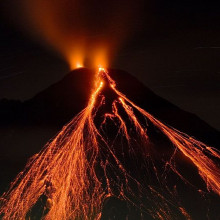
24:15 - How Dinos Died - Meteorites, Flood Lava and Supervolcanoes
How Dinos Died - Meteorites, Flood Lava and Supervolcanoes
with Dr Janet Sumner, the Open University.
Janet Sumner is interested in the subject of Mega-eruptions and meteorites, things which are devastating for life on Earth.
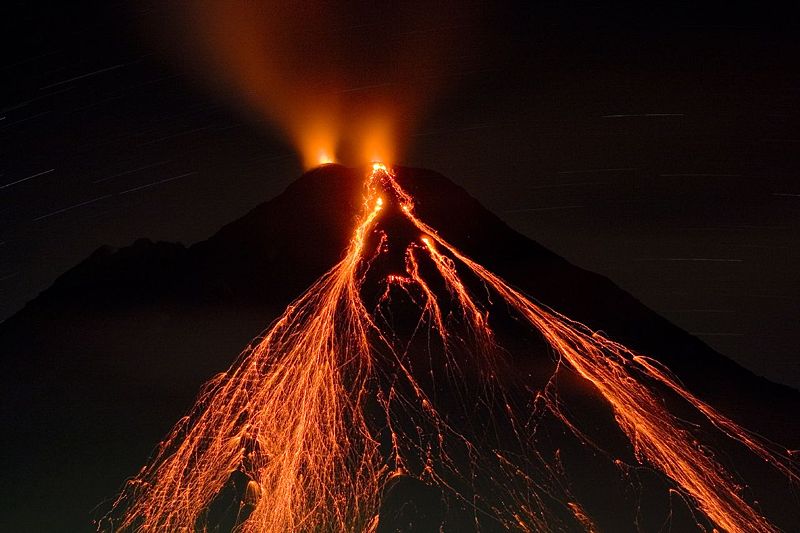 Janet - I work on natural hazards and they're much larger things than Joel's Curtain hazards [
Janet - I work on natural hazards and they're much larger things than Joel's Curtain hazards [
see Joel Veitch interview], in fact these are pretty big natural hazards.
Chris - This would be a giga-giga-giga Curtain?
Janet - It would be a super-giga-Curtain, yes. It's the kinds of thing that really results in a global mass extinction. That's a total eradication of entire groups of species - we're talking the death of the dinosaurs, basically.
Chris - So what do you think that actually triggered the death of the Dinosaurs? Do you know what it was? Was it a massive great eruption? We're all used to the idea that some kind of meteorite slammed into the Earth, which do you think it is?
Janet - That's true, actually. It was, and it still is widely believed that the dinosaurs were wiped out by the impact of the Chicxulub meteorite into the Yucatan peninsula in Mexico about 65 million years ago. But there have been five great mass extinctions in the past 450 million years. The dinosaur one is the only one associated with a meteorite impact, all the other mass extinctions including the dinosaurs as well all correspond to the outpourings of huge flood lava eruptions.
Chris - If we could look at both of those in turn then, the meteorite that slammed into the Gulf of Mexico, how big would have that needed to be to alter the planet so dramatically that nearly all life ceased?
Janet - Well, it was many many tens of kilometres across, and basically the effects of a large meteorite impact like that are devastating. But the fact is, because we'd had this really long running eruption going on for thousands of years, the dinosaurs were already on their way out and all the impact did was finish them off a bit quicker.
Chris - That's interesting, I didn't realise that the dinosaurs were already waning, I thought they were at their peak at that time.
Janet - No, they'd already pretty much had it, because there had been one of these huge flood lava eruptions going on in India for many thousands of years. What we now know happens with these flood larva eruptions is; when a volcano explodes it releases ash and sulphur, that gets up into the atmosphere and it produces a kind of blanket in the atmosphere and that prevents the sun's rays from getting through. So it causes a global environmental change, and interestingly it's actually the opposite of what's going on at the moment, because right now we've got global warming, but when you get a big flood lava eruption like this you actually get global cooling, because this blanket stops the rays of the sun from getting through and keeping us warm.
Chris - So what actually is this flood lava? Where does it come from? What provokes it and why is it so devastating?
Janet - These massive eruptions are often associated with plate tectonic movements and rifting and big up wellings of hot material coming out of the mantle. They can break through cracks in the surface. They can go on for thousands of years and can produce piles of lava that are up to three kilometres thick. The thing about the sulphur and the ash, you've got to get it up into the atmosphere for it to do its work. For a long time, scientists thought that flood lavas just kind of spew out onto the ground, really quietly and then just flow off. The research I've been doing has now proved that that's not the case, because I've found lots and lots of beds of ash within these flood lava successions. Where you've got ash, you have to have an explosive eruption. So now it seems that these flood lavas are coming out so violently the molten rock is being ripped to bits and forming a huge curtain of fire, topped off by a massive ask plume. So hey presto! Now we can get our ash and sulphur up into the atmosphere and cause enough global cooling to cause mass extinctions.
Chris - So when was the one which had done for the dinosaurs?
Janet - The Chicxulub impact was 65 million years ago.
Chris - But when was the big lava outpouring which had begun to see off the dinosaurs?
Janet - It started just over 65 million years ago, so exactly the same period. It just preceded the Chicxulub impact, which happened virtually at the end of it.
Chris - And where was all that lava coming out? Was it an unstable period of Earth's geology so it was coming out everywhere, or was it just one place on Earth?
Janet - They tend to happen periodically in different parts of the Earth. The one I was looking at was actually in India, as rifting was starting to happen in India. We've got one closer to home [The Naked Scientists is based in the UK] in the North Atlantic igneous province just up to the North of us. There's also one that happened in Africa so they happen all over the world at different periods.
Chris - So how can people have missed this before, because I know everyone's attention has been focussed on the fact that a meteorite arrived, it changed the Earth's weather so dramatically it wiped out the dinosaurs, how could they missed three kilometres thick of lava deposits?
Janet - Well, we knew it was there, and we knew that large flood lava eruptions do cause mass extinctions because of this really strong correlation, we didn't know the mechanism for getting this ash and sulphur up into the atmosphere to actually cause the global cooling. Everybody thought the lava just flooded out - hence the name, flood lavas. But now we know that there is a mechanism for them to come out explosively and to actually put that ash up into the atmosphere where it can do it's damage.
Kat - So is there any chance of one of these flood lava eruptions happening again, are we due one?
Janet - That is always the question that everybody asks - "are there going to be any more mass extinctions?" And why? Because we're worried about us, aren't we?!
Kat - Yeah!
Janet - Well the answer is yes, there could be another mass extinction; one, if we were hit by another meteorite and two, if there was another flood lava eruption. But what is more likely to happen, a much bigger hazard to us is if we have a super-volcano go off. Now super volcano eruptions happen every 50 thousand to every 100 thousand years, and there are a number of super volcanoes around the world. One particular candidate is long overdue, and that's Yellowstone volcano in the US. That is overdue by some thousands of years, so if that was to blow, it probably wouldn't cause global mass extinction but it would certainly cause global famine. That would probably mean the end of civilisation as we know it.
Chris - What's the prospect that it will? What's going on there? People say that the land is moving, how long has it been there?
Janet - Oh gosh, Yellowstone has been there for hundreds of thousands of years, and I think it's had three major eruptions in its lifetime. It is due for another one, and scientists have seen that the land is doming up. But it could be another 50 thousand years, because it's been very hard to predict with these.
Chris - Would it definitely go bang, or could it just go 'phut' like a failed firework?
Janet - I don't think it's going to go 'phut', I think the chances of a big bang are probably fairly high. But I don't want to be too depressing here, doom and gloom. What I actually wanted to say was, have you ever seen a meteorite?
Chris - Well, I have, but only in a museum, I've never actually held one.
Janet - If you want to hold something from outer space you can because I've got one in my pocket.
Chris - Oh wow!
Kat - I want it!
Janet - Now that's a stony iron meteorite...
Chris - This is incredible...
Kat - I want to see it!
Chris - I'm holding a pebble in the palm of my hand, and I'm going to give it to Kat in a minute because she's itching to look at it. It just looks like any other lump of rock, but it looks a bit rusty. Is there any iron in it?
Janet - It's a bit rusty on the outside, you'll see it has one polished cut surface on it and you can actually see the iron glinting in it. That's a lump of rock and iron which makes it a stony iron meteorite. You'll notice the outside of it is quite smooth, that's something called a fusion crust. It happened as it heated up and started to melt as it came through our atmosphere, and ultimately landed on Earth. This one is the size of a golf ball, but it's also quite heavy because of all the iron in it. Now if you can imagine a much much larger scale meteorite and that hitting the Earth, it would probably make a bit of a mess.
Chris - That would be about 4.5 billion years old presumably, the age of the solar system?
Janet - Yes.
Chris - So that's pretty impressive, I don't think I've ever held anything quite that old.
Kat - That's pretty cool.
Chris - It wouldn't have been once!
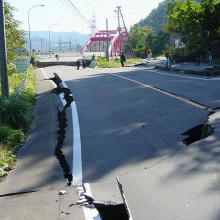
33:03 - Deep Quake
Deep Quake
with Dr Peter Kelemen, Columbia University
Kat - Hi Peter, thanks for coming all the way over from the States.
Peter - Oh yeah, just for this!
Kat - So tell us a bit about earthquakes, what's happening when an earthquake's happening?
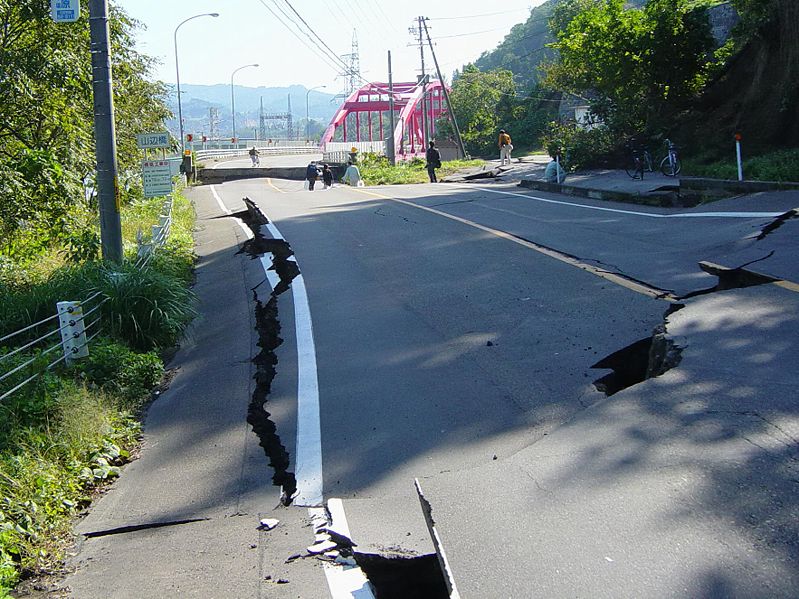 Peter - Well, in general what happens is that there's already a fault surface, and there's friction on the fault surface, and when that's overcome, it becomes much easier for the rocks to slide by one another. That's really crucial, that it's hard to get it started and then once it gets started it runs away.
Peter - Well, in general what happens is that there's already a fault surface, and there's friction on the fault surface, and when that's overcome, it becomes much easier for the rocks to slide by one another. That's really crucial, that it's hard to get it started and then once it gets started it runs away.
Kat - Are all earthquakes the same, all we hear is 'an earthquake has happened', are they the same speed? Where do they happen in the Earth?
Peter - There's a huge variety of Earthquakes and maybe I'll just take the where question first, and that is; the big earthquakes are where the tectonic plates are sliding by one another, one way or another, and so the very biggest ones are in the subduction zones where oceanic plates are being slid beneath the continents.
Kat - So where do we have these around the world?
Peter - Well they're in the Ring of Fire, so called, or the seismic zone next to the Ring of Fire in the pacific and then in the lesser Antilles and elsewhere.
Kat - So these are places like Japan where they are particularly susceptible...
Peter - And then of course, that kind of plate boundary turns into what we call a straight slip fault, where plates are sliding by one another, and that's the big deal in San Francisco.
Kat - So the sorts of earthquakes you're looking at are a particular type, called intermediate depth. What does that mean?
Peter - Well, we were interested in those... Well first of all I have to tell you, I'm not a seismologist, I'm a geologist, we just work on rocks, but we got interested in intermediate depth earthquakes because of things we saw in the rocks. Intermediate depth earthquakes have been hard for seismologists to understand because they occur beneath a big pile of rock. That could be 50 or 100 kilometres thick, and so the ordinary sliding on a fault surface is very difficult when you've got 100 km of rock sitting on top of you. So we see the shear zones that formed at this sort of depth in the mantle of the Earth, that are now exposed by plate tectonics, and you can see that there is no fracture, but there is a zone of highly localised deformation. Sometimes you can see that these rocks got so hot that they melted.
Kat - Are these types of earthquakes particularly damaging?
Peter - Yeah, they're just as bad as the shallower kind, there have been some big ones in Bolivia that were quite damaging to cities.
Kat - We have Mark on the line now, who would like to talk about earthquakes...
Mark - Hello there!
Kat - What's your question?
Mark - My question is, when geologists and seismologists talk about earthquakes, they very rarely mention the influence of tides. Many earthquakes, including the Boxing Day earthquake which caused the tsunami in the Indian Ocean a couple of years back happen at a time of unusually high tides. I just wandered what Peter Kelemen had to say about that.
Peter - There is a well-known cyclicity with tides for micro-earthquakes and presumably that extends to macro-earthquakes. There's the idea of self-localised criticality, that things get poised on the brink of failure, and then just some very very small phenomenon is all it takes to push them over the edge. I wouldn't be at all surprised if there was a correlation in general between great earthquakes and tides.
Mark - I think you'll find if you look at many large earthquakes and volcanic eruptions, if you check the tide patterns they often happen at periods of higher than average tides.
Peter - Right, but that doesn't mean that if you live in San Francisco you should be worried every time the tide is higher than average.
Mark - No, but you could be aware at that particular time rather than other times.
Peter - Yeah, sure.
Chris - I suppose that the point that Mark is making to us, Peter, is that the moon is exerting a gravitational effect on the Earth and if you've got big bodies of water, that's quite a big weight pushing down. I suppose that could make a difference to the way that tectonic interaction zones do interact and so might suddenly release all the pent up energy.
Peter - Without a doubt, there is a correlation and you can watch, we have instruments on the sea floor regularly, you can watch the mid ocean ridges kind of breathe with the tide. The earthquakes and the hydrothermal vents, the hot water coming out, goes with the tidal cycles.
Chris - Thanks for that Mark, that was a really good question. Thanks for coming on the programme.
Mark - Thanks, bye!
Chris - It's interesting because I for one was quite shocked; I looked at the US geological survey's website today because they monitor earthquakes that are going on around the world all the time. I didn't realise that yesterday there were 22 earthquakes, today at lunchtime there had already been 12 earthquakes. One of them was in the middle of the pacific measuring almost 6 on the Richter scale. I was surprised at how many there were and how strong they were.
Peter - Well actually it's kind of a matter of definition, and as our instruments get better there's going to be more and more earthquakes that people are reporting. So the magnitude 1 and less than 1 earthquakes are extremely frequent and happen for all sorts of reasons, for example people pumping water out of the ground.
Kat - And how is our knowledge about the causes of earthquakes, some of the work you've been doing, is it helping to predict when and where they're going to happen any better?
Peter - One of the most important outcomes of our research is the idea that even below the so called brittle ductile transition, where it's very difficult for rocks to fracture, there can be non-steady deformation in the Earth. Because the mantle is much, much stronger than the crust, because it's moving in a non-steady way, jerking forward and then standing still for centuries, that's going to be extremely influential in terms of causing shallower crustal earthquakes. So if it is a factor, and we're not sure yet. It's something you would have to know in order to predict earthquakes.
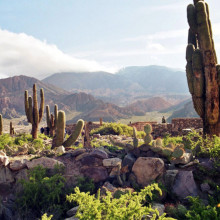
39:20 - Poisoned Land - Arsenic in Argentina
Poisoned Land - Arsenic in Argentina
with Dr Michael Watts, British Geological Survey
Michael Watts has recently been looking at arsenic contamination in Argentinean soil.
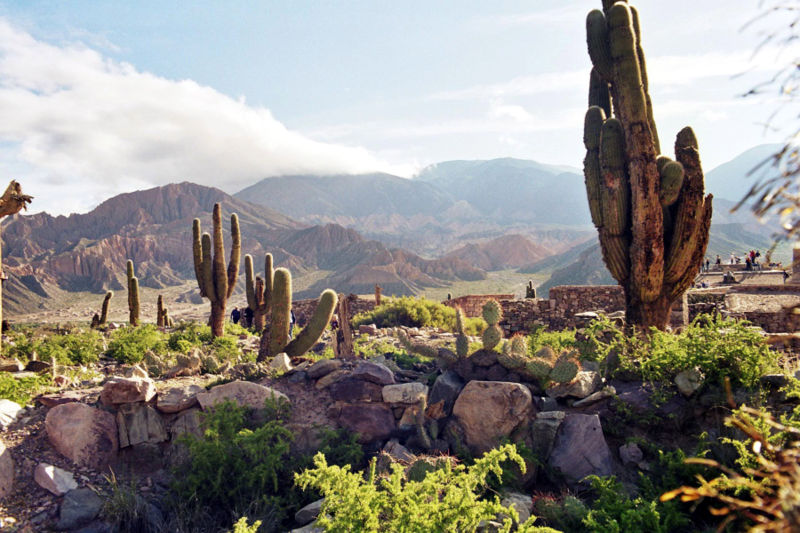 Michael - This is a project that we're doing in collaboration with the University of Surrey, professor Neil Ward actually set up this work, we're doing this through co-sponsorship of a PhD student. The idea is that she's looking at a northern region in Argentina, San Juan and La Riocha, well known for the wine. It's also well known for high arsenic levels in the local water and in the soils. What were doing is helping out local geoscience institutes and local universities and with local medics we're trying to build up a picture of what is actually going on. We're building up information in three layers, working out the environmental geochemistry, surveying waters and soils for the arsenic content.
Michael - This is a project that we're doing in collaboration with the University of Surrey, professor Neil Ward actually set up this work, we're doing this through co-sponsorship of a PhD student. The idea is that she's looking at a northern region in Argentina, San Juan and La Riocha, well known for the wine. It's also well known for high arsenic levels in the local water and in the soils. What were doing is helping out local geoscience institutes and local universities and with local medics we're trying to build up a picture of what is actually going on. We're building up information in three layers, working out the environmental geochemistry, surveying waters and soils for the arsenic content.
Chris - Where is all this arsenic actually coming from in the first place?
Michael - Well, the arsenic will actually be naturally occurring in the environment, but it may well be present in the water systems due to mining.
Chris - The Victorians were very fond of it because it made very nice green wallpaper, and then made people go green and die. But why is it toxic and why is it something we should be worried about?
Michael - Well, it's a well-known poison, one of the issues is actually the chemistry of the arsenic and the form that it's present in the environment. The toxicity and the availability to be taken up by humans is really dependent on the chemical form. That could be the redox conditions, or the presence as an organic compound.
Chris - So when people drink water or eat food or whatever that's been grown on arsenic contaminated land, that's a way that they can get the arsenic into their body?
Michael - Yeah, or through hand to mouth contact, so if you've got a bit of soil on your hands, if you've done a bit of gardening, and you touch your mouth, or soil attached to vegetables.
Chris - So how are you actually trying to study how much arsenic people are actually being exposed to? Is there a way of doing that?
Michael - Well with this Argentinean work we're sort of building up a survey of the waters and soils looking at agricultural products, and then that will lead to human studies. With the help of local medical experts, we're collating information from rural communities and getting a medical history of the people, where there have been a number of health conditions or even deaths related to arsenic poisoning. We really need to confirm this anecdotal link between environmental data and the end point when people are ending up with diseases.
Chris - Someone was saying to me the other day that earthworms are proving really quite useful in trying to work out what's in the soil.
Michael - That's some work we've been doing in the UK, it's been well documented that earthworms are excellent indicators of the health of the soil, and one of those uses is to look at the arsenic uptake in the earthworm and look at the effect on it's health. We can do that by looking at cell damage as a result of exposure to arsenic.
Chris - So rather than a canary in a cage, you've got an earthworm in the ground and you can use that as an index of the degree of contamination.
Michael - Yes, there's a tentative link to humans there, it's more an indicator or eco-toxicity. We do use another technique called the PBET, which is a Physiology Based Extraction Technique. This is quite a popular technique for simulating the human gut. We would do a laboratory-controlled experiment with a tube. We put the soil into a tube and then add bile juices and acids and so on to simulate the stomach.
Chris - So it's sort of like a stomach in a dish?
Michael - Yeah, that's it really. So we look at how much arsenic is released from the soil, so how much arsenic is available for the human to be taken up. So rather than looking at the total arsenic in the soil, we're looking at the accessible arsenic, which is a very important point.
Chris - If you discover there's lots of arsenic in the soil, what can you actually do to remedy the situation?
Michael - That's quite a difficult issue. One of the most expensive remedies is to actually remediate the land, take it away for landfill and replace it. It's a very difficult thing to do, or seal the land. For communities in Argentina it's a very difficult issue, because they are reliant on subsistence farming. There might be a recommendation for filtering the irrigation water, whether there are engineering means to correct this, or maybe they source the water in other ways.
Chris - So really avoidance rather than cure at this stage.
Michael - It's a very difficult thing that's beyond our expertise at the moment we can build up the weight of evidence to suggest that the arsenic is there and it could be a problem, or maybe it's just perfectly happily sitting there, not causing any problems. But building up the weight of evidence so that governments and institutions can come in and recommend methods of remediation.
Why use carbon dioxide for fizzy drinks?
We don't use oxygen for this because oxygen is very good at oxidising things, and will make them go off. This will make your drink taste nasty. Carbon dioxide is basically a neutral chemical; it doesn't react with much, so it shouldn't make your drink taste bad.Carbon dioxide is also acidic and when it's dissolved it makes carbonic acid, which gives a nice, lemony, sparkly taste in your mouth.
Why does adding salt to beer make it fizz?
Even when it looks like a drink has gone flat, there's still a lot of carbon dioxide dissolved in it. Sprinkling salt or sugar in the drink will create lots of 'nucleation' sites on which bubbles can form, so some fizz will come back.
- Previous Question and Answer Show
- Next Forensic Science Show
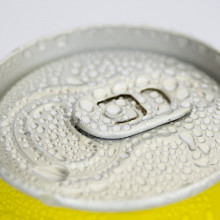









Comments
Add a comment